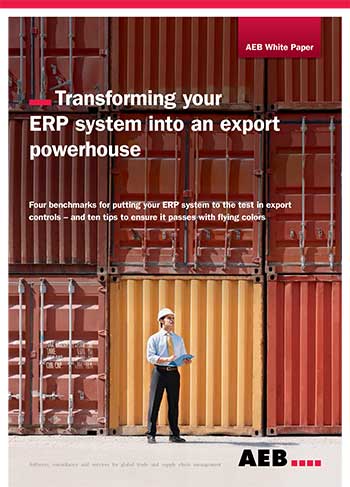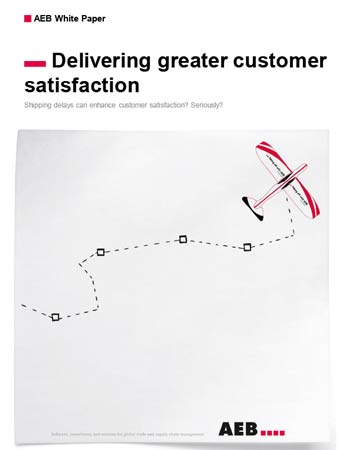Elastic Warehouse Part 1: Coping With the New ‘I Want it Now’ Culture?


Every retailer expects seasonal peaks and troughs, be it Christmas or Easter, back to school or the launch of the new Autumn/Winter fashion collection. In fact it’s vital for their business to stay in touch with consumer buying patterns.
When it comes to meeting the demand, there’s no doubt that providing the logistical support exactly when and where it is needed is a challenge. This is especially true given today’s economic pressures.
The philosophy to outsource production overseas is as strong as ever as it gives most retailers the most cost effective way to remain price competitive. Conversely, the demand for British products overseas is growing, giving way to the need to service more international shipments. With this comes the advent of port centric hubs that can manage the complexity of in and out bound international shipments with exceptional efficiency. The numbers of port centric hubs that manage in-country and overseas shipments from one central point is therefore set to grow.
Furthermore there is an added complexity, namely the advent of consumers buying into trends that aren’t aligned to the traditional seasonal buying patterns or forecasted national and international buying patterns.
For example, the food industry has undergone what some might call a revolution over the last ten years, as people hunt for more exotic flavours or hand-crafted foods. What’s more these new trends won’t necessarily follow the same forecasting principles applied to seasonal events – who really knows how many heritage tomatoes will be bought by the average household when they first hit the shelves?
There has also been a change to how consumers shop. Home delivery grocery shopping has been embraced by the UK consumer but new channels such as ‘click and collect’, as well as services that promise to deliver orders placed before 10pm to store or a home address the next day, are starting to become the norm in the UK. While in France, the drive through hypermarche is set to take off as pioneered by Chronodrive for Groupe Auchan and Carrefour.
This leaves the logistics manager with a complex problem, namely how to manage the demand for existing channels and maintain the flow of the more predictable day-to-day demand yet still:
- support the introduction of new channels, which represent growth and a way to differentiate in a competitive market
- accommodate forecasted seasonal variations
- have the flexibility to manage more volatile ‘trends’ until they are a proven commodity
- hit the SLA the customer is accustomed to and avoid unforeseen costs
- avoid introducing any risk to the supply chain that could bring contamination, or breach contractual or safety obligations for example
- and deliver it all within the same confines of the existing warehouse
It goes without saying that the financial winners will be the distributors who can manage the external forces and create the most efficient supply chain. For some it will be achieved by investing millions in state of the art facilities to create the new super hubs that the port centric models rely on. For others it will be to re-engineer and streamline the existing facilities, possibly with some expansion.
Without doubt it’s a complicated puzzle for the Board. It not only needs to serve the strategic needs of today but also those of tomorrow. But there is an answer for those who want to maximise the investment in line with their business’ growth: The ‘Elastic Warehouse’.
What’s the big idea?
Take the scenario of Christmas trading, when an operation needs to be able to distribute millions of Christmas puddings over a 12 week period. The capacity to manage inbound and outbound distribution at speed must increase without compromising standards or SLAs. It’s vital to ensure lorries aren’t backing up, and delivery deadlines with stores are kept. Requests to pick the product ready for shipment are likely to be constant to meet consumer demand, so it’s essential to be able to pick orders accurately and in time, plus keep the more everyday operations running smoothly.
Of course the puddings will join other seasonal products such as Christmas cake and mince pies together with the existing product lines. Space will therefore be at a premium, even if isn’t occupied by some lines for very long.
This poses all sorts of process and people challenges from coping with the volumes to keeping the stock moving, and identifying how to prioritise stock through the warehouse according to shelf life or the severity of penalties attached to SLAs for example.
Failure to overcome these issues will restrict the company’s potential to bid for larger or flexible contracts and ultimately curtail revenue opportunities. It could also bring fines if goods perish, are damaged or arrive late. In today’s ultra-competitive market no company can afford to restrict its opportunity for growth, or risk incurring costs just because its warehouse isn’t big enough, or becomes inefficient under pressure.
What is an Elastic Warehouse?
Faced with such a situation, the Elastic Warehouse delivers the flexibility that logistic managers need - the capability to manage more arrivals at the warehouse door, accommodate more stock, and the ability to easily find items for quick onward distribution, all within the parameters of the existing property.
In essence the Elastic Warehouse virtually expands and contracts in line with demand and at a moments notice. It’s a versatile way of managing the assets you have to meet demand, with financial control.
It can be achieved through a variety of ways, all rest on technology. But whichever way is chosen the benefits of an Elastic Warehouse are wide reaching. The approach provides companies with:
[email_signup:signup_form]- the flexibility to meet fluctuations and unplanned changes to demand
- the potential to take on more contracts and not forfeit seasonal work
- financial stability, accounting for fluctuations in a far more controlled way
- a demonstrative way to show customers you can increase work flow without jeopardising SLAs or impeding regulatory standards
- improved staff efficiencies from well organised working conditions
There are four main approaches:
Elastic Overheads – This model works on the principle of making your existing investments work harder and will comprise technology, people and warehouse space. It involves use of the latest technology to optimise all assets, including staff, helping you to do more with less. This model therefore works at its best when scheduling tools that link into the ordering and fulfillment systems are adopted, as it helps to determine how many people are needed, when and where to cope with the inbound and outbound demand. It is likely to require a core technology set comprising handheld technology used to check in, find, pick and allocate stock as the warehouse expands. This is especially true as more SKUs and greater quantities of a SKU are managed and the need to be able to accurately forecast stock levels and demand at any one time grows.
Elastic Outsource – This model outsources the warehousing and distribution of key seasonal lines for a finite period so that the existing operation can stay focused on the core lines. To be successful the customer should experience no change to the service they receive so its critical inventory systems are integrated with those of the outsource partner. This creates a truly virtual warehouse whereby the same customer manager can see order information even though the products involved are in another warehouse, possibly in another country.
Elastic Tech – This is a completely technology lead implementation. Manual processes and paperwork are replaced with automatic data capture and mobile computing devices, including handheld and vehicle mounted computers. Data capture technology is integrated with an ERP/WMS system for real-time inventory management. Utopia is an operational design that speeds up and improves the exchange and flow of information and decision-making, as well as fast tracks shipments from ‘goods-in’ through the warehouse and out to the final destination – a true end to end supply chain. It will use people power far more effectively and thus grows the warehouse’s capacity to manage more stock and orders with 100% picking accuracy. It is ideally suited to large warehouse operations that are supported by regional distribution centres, and in particular operations that facilitate ‘click and collect services’, and pick and transfer stock overnight not just from a warehouse but also stock in stores.
Elastic Blend - This methodology cherry picks the elements of the first three approaches to give the ultimate financial and operational control. It’s likely to be dominated by a technical solution that integrates inventory, work management and ERP systems for an up-to-the-minute view of operational performance, efficiency and capacity. This technology backbone is then used to take advantage of the flexibility that the Elastic Outsource and Elastic Overhead models bring. It is a truly scalable model that gives decision makers the best information on which to act, helping to accurately determine how far to expand, and how much to invest, during busy trading period.
The very nature of FMCG means that warehousing and logistics must always evolve to be fleet of foot. However, it hasn’t been until now that the technology that can make an Elastic Warehouse a reality has been available. And of course the beauty of the Elastic Warehouse is it is scalable – it’s possible to evolve from one model to another, as the company strategy, economics and finances dictate. The key is to determine which model is best to start with and align it to a three to five year plan to ensure an ROI on investment is achieved.
Is the Elastic Warehouse right for my organisation? The answer is most probably yes. Any company that wants to become more efficient and reduce cost, or pursue new revenue opportunities, should be thinking about adopting an Elastic Warehouse strategy.
Want more like this?
Want more like this?
Insight delivered to your inbox
Keep up to date with our free email. Hand picked whitepapers and posts from our blog, as well as exclusive videos and webinar invitations keep our Users one step ahead.
By clicking 'SIGN UP', you agree to our Terms of Use and Privacy Policy


By clicking 'SIGN UP', you agree to our Terms of Use and Privacy Policy
Other content you may be interested in
Categories

Want more like this?


Want more like this?
Insight delivered to your inbox
Keep up to date with our free email. Hand picked whitepapers and posts from our blog, as well as exclusive videos and webinar invitations keep our Users one step ahead.
By clicking 'SIGN UP', you agree to our Terms of Use and Privacy Policy









